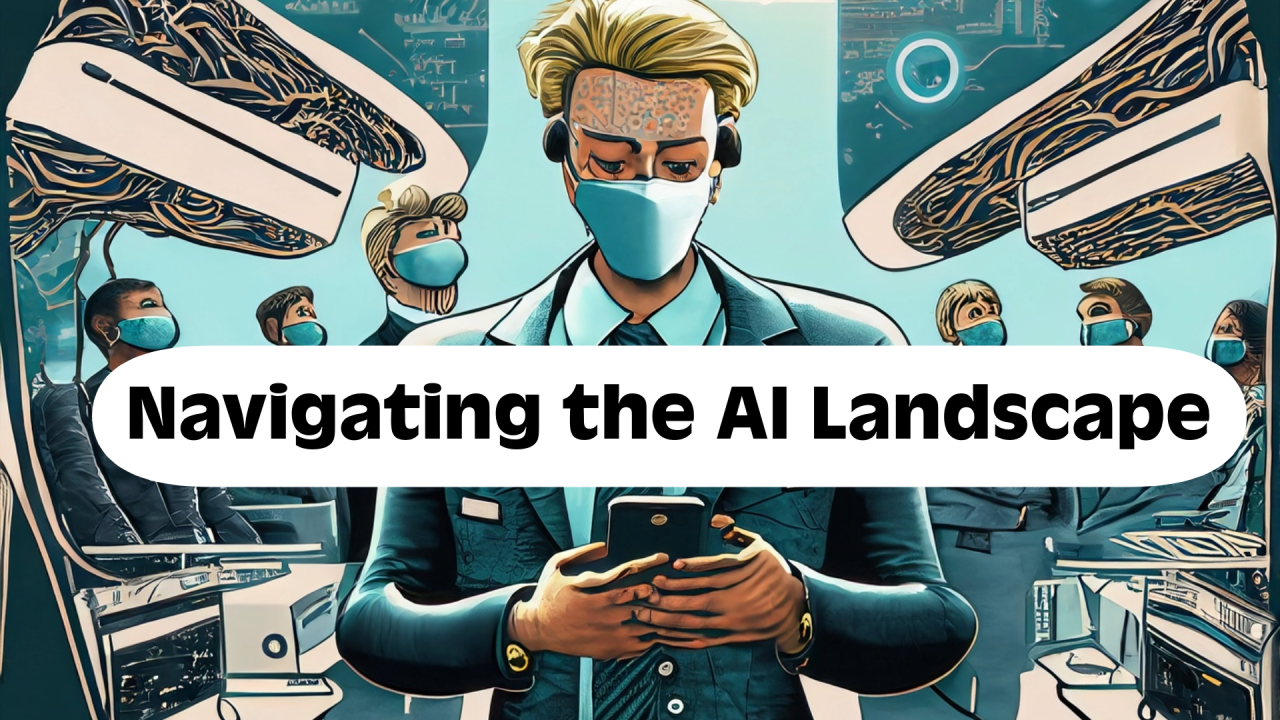Introduction:
As the demand for artificial intelligence (AI) and machine learning surges, businesses face a critical juncture in adopting next-generation AI solutions. However, the evolving AI landscape brings forth challenges that, if not addressed, could lead to stagnation and inefficiencies. This article explores the current state of AI evolution, emphasizing the need for businesses to tackle concerns related to fears, bias, security, and efficiency.
 AI’s Potential Impact on Workplace Dynamics:
AI’s Potential Impact on Workplace Dynamics:
With the advent of generative AI and large language models (LLMs), workplace automation and productivity stand on the brink of a transformative era. These technologies possess the capability to redefine how work is conducted, ushering in increased efficiency, fostering innovation, and reshaping the nature of certain job roles. However, the growing demand for these advanced AI solutions poses a hurdle for mid-level executives grappling to meet the expectations set by C-level leadership.
Addressing Three Critical Challenges in AI Transformation:
Morgan Llewellyn, Chief Data and Strategy Officer for Stellar, identifies three pivotal challenges that organizations must overcome to propel AI adoption forward productively. These challenges include gaining a comprehensive understanding of AI capabilities, aligning AI functionalities with internal work processes, and enhancing workers’ capacity to adapt to AI-induced changes.
Navigating Security Concerns in AI:
The unresolved concerns about security safeguards in AI operations loom large. Mike Mason, Chief AI Officer at Thoughtworks, challenges the prevalent notion of heavy reliance on government regulation. He argues for a responsible approach within industries to ensure the ethical and secure use of generative AI. Mason highlights the importance of businesses earning consumers’ trust through responsible practices, emphasizing the significant impact of public opinion on accountability.
 Contrasting Views on Regulation:
Contrasting Views on Regulation:
While studies indicate a consumer preference for stringent regulations (90% favoring new regulations for accountable AI use), Mason contends that businesses can create their social license to operate responsibly. Drawing attention to the power of transparency and equity in AI usage, he urges businesses to take a proactive stance in building trust and accountability.
AI Safety and Bias:
Addressing concerns about AI’s potential dangers, particularly in Sci-Fi scenarios and invasive use, Mason emphasizes the need for increased investment in AI safety research. He notes the existing problem of biased results in AI systems due to training data, underlining the importance of addressing data privacy, security, and bias to maintain customer trust and avoid significant business impacts.
Powerful Use Cases:
In the dynamic landscape of artificial intelligence (AI), the transformative power of this technology is vividly illustrated through a myriad of compelling use cases across diverse industries. These real-world applications showcase how AI goes beyond theoretical possibilities, demonstrating tangible benefits in terms of efficiency, innovation, and problem-solving. Let’s delve into some powerful and detailed use cases that underscore AI’s profound impact.
1. Revolutionizing Product Development in the Food Industry: Mondelez International, a leading player in the food and beverage sector, harnessed the capabilities of AI to revolutionize its product development process. Traditionally, developing new snacks involved an intricate and time-consuming process of testing hundreds of ingredients, creating recipes, and relying on expert human tasters to determine the best results.
Enter AI – Thoughtworks, a technology consultancy, collaborated with Mondelez to implement an AI system. This system allowed snack developers to input data on previous recipes and expert taster results. The AI, in turn, generated a list of 10 new recipes for testing. The iterative process continued, with AI incorporating feedback and refining results. The outcome was not only a faster convergence on the desired flavor profiles but also substantial cost savings and a reduction in development timelines by months. This use case vividly illustrates how AI can optimize complex processes, enhance decision-making, and drive significant economic benefits.
2. Streamlining Data Analysis and Problem-Solving in Healthcare: In the healthcare sector, AI has emerged as a powerful tool for data analysis and problem-solving. Diagnostic imaging, a critical aspect of medical diagnosis, has witnessed a transformative shift with AI. Radiology departments are leveraging AI algorithms to analyze medical images, detect anomalies, and provide accurate diagnostic insights.
For instance, AI-powered algorithms can assist radiologists in identifying potential abnormalities in X-rays, MRIs, and CT scans, significantly reducing the time required for diagnosis. This not only enhances the efficiency of healthcare professionals but also contributes to early detection of diseases, ultimately improving patient outcomes. The use of AI in healthcare showcases its potential to revolutionize not just administrative tasks but also core aspects of medical practice, thereby advancing the quality of patient care.

3. Enhancing Customer Engagement through Personalized Recommendations: E-commerce giants and online streaming platforms are utilizing AI to elevate customer engagement through personalized recommendations. By leveraging machine learning algorithms, these platforms analyze user behavior, preferences, and historical data to curate customized content and product recommendations.
Consider a scenario where an e-commerce platform utilizes AI to understand a customer’s browsing history, purchase patterns, and product preferences. The AI algorithms can then generate personalized product recommendations tailored to individual tastes, fostering a more engaging and personalized shopping experience. This not only enhances customer satisfaction but also contributes to increased sales and customer loyalty. The use of AI in personalized recommendations showcases its ability to understand and cater to individual preferences at scale, thereby reshaping the dynamics of customer interactions.
4. Transforming Manufacturing Processes with Predictive Maintenance: In the realm of manufacturing, AI is playing a pivotal role in predictive maintenance. Traditional maintenance practices often rely on fixed schedules, leading to inefficiencies and potential equipment failures. AI-driven predictive maintenance, on the other hand, analyzes real-time data from machinery, sensors, and historical maintenance records to predict when equipment is likely to fail.
For instance, in an industrial setting, AI algorithms can continuously monitor the performance metrics of machinery. By identifying patterns indicative of potential issues, predictive maintenance alerts maintenance teams well in advance, enabling proactive interventions to prevent breakdowns. This not only reduces downtime but also extends the lifespan of equipment, resulting in significant cost savings for manufacturers. The use of AI in predictive maintenance exemplifies its role in optimizing operational efficiency and ensuring the seamless functioning of critical infrastructure.
Conclusion:
As businesses navigate the complex AI landscape, addressing fears, bias, security, and efficiency emerges as paramount. A strategic and responsible approach, coupled with proactive measures to build consumer trust, will be instrumental in unlocking the full potential of AI and ensuring its seamless integration into various industries. In this evolving AI era, businesses that proactively tackle challenges will not only stay ahead but also contribute to shaping the responsible and impactful evolution of artificial intelligence.
Read more: